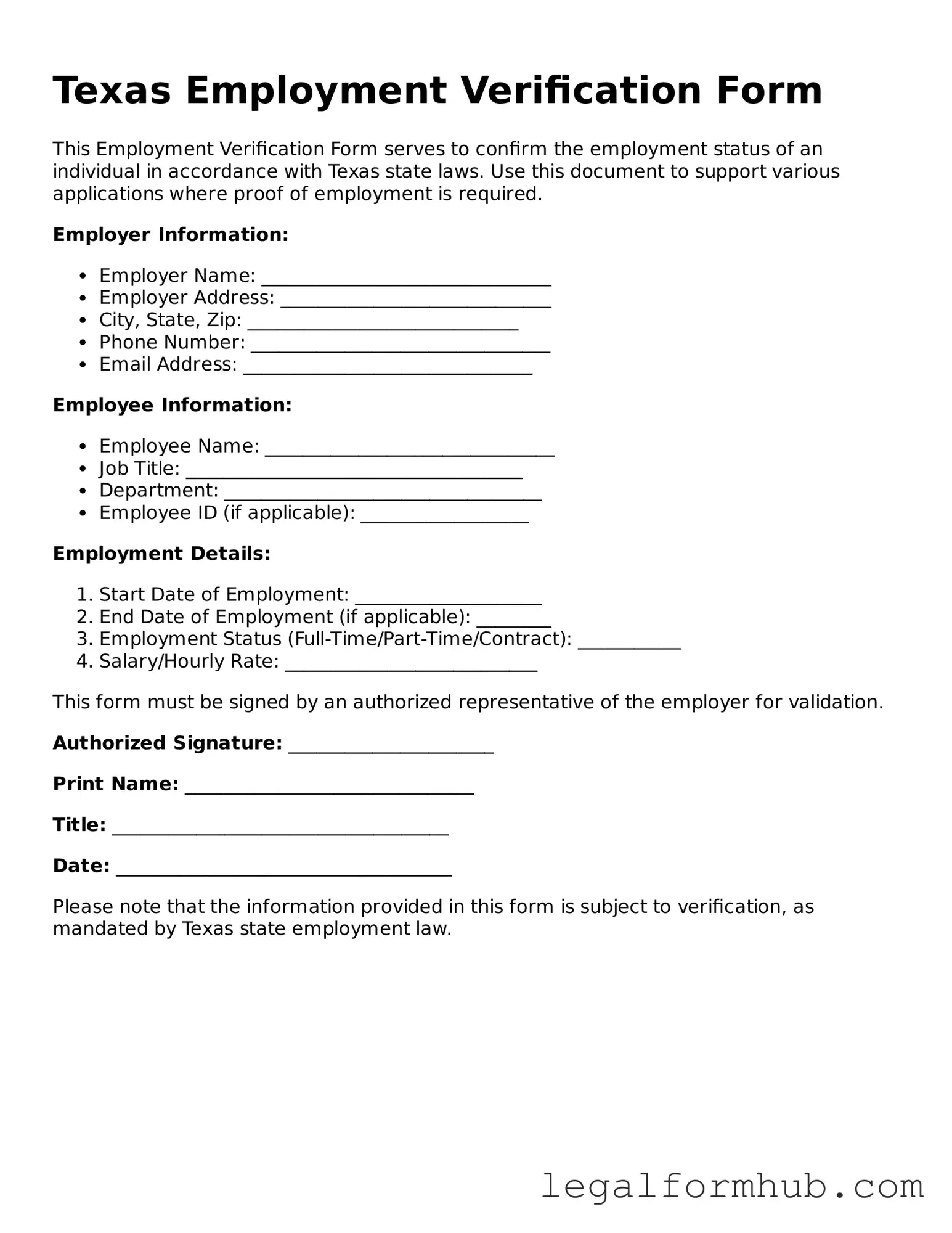The I-9 Employment Eligibility Verification form is a federal document used by employers to verify the identity and employment authorization of individuals hired for work in the United States. Like the Texas Employment Verification form, the I-9 requires employees to provide personal information and documentation to prove their eligibility. Both forms serve to protect employers from hiring individuals who are not authorized to work, ensuring compliance with employment laws.
The W-4 form, or Employee's Withholding Certificate, is another important document that shares similarities with the Texas Employment Verification form. While the W-4 focuses on tax withholding, it also requires personal information from the employee. Employers use this form to determine the amount of federal income tax to withhold from an employee's paycheck. Both forms are essential for accurate record-keeping and compliance with federal regulations.
The Texas Workforce Commission (TWC) forms, such as the TWC Employment Verification form, are also comparable to the Texas Employment Verification form. These documents are used to confirm employment status and wages for various purposes, including unemployment benefits. Both forms aim to provide verification of employment details, although the TWC forms may have a broader focus on state-specific requirements.
The Social Security Administration (SSA) form for wage reporting is similar in its purpose of verifying employment. Employers use this form to report employee wages for Social Security benefits. Like the Texas Employment Verification form, it requires accurate information about the employee's earnings and employment status, ensuring that proper benefits are allocated based on verified income.
To ensure that your employment transactions are documented properly, it is essential to use the appropriate forms, such as the Fill PDF Forms for bill of sale or other legal documents that validate ownership and work eligibility.
The Form 1099 is another document that shares similarities, particularly for independent contractors. This form reports income earned by non-employees and is essential for tax purposes. While the Texas Employment Verification form pertains to employees, both documents require accurate reporting of income and employment status, which is crucial for tax compliance.
The background check authorization form is also relevant, as it often accompanies employment verification processes. This document allows employers to conduct background checks on potential hires. Like the Texas Employment Verification form, it serves to confirm information about the individual, ensuring that hiring decisions are based on verified data.
The employee onboarding checklist is another document that aligns with the Texas Employment Verification form. This checklist often includes various forms and documents that new hires must complete, including employment verification. Both documents are part of the onboarding process, ensuring that employers have all necessary information to comply with legal requirements.
Finally, the state-specific employment verification letters are similar as they serve to confirm an employee’s job status and details. These letters may be required for various purposes, such as loan applications or rental agreements. Like the Texas Employment Verification form, they provide essential verification of employment information, helping individuals navigate personal and financial matters.
